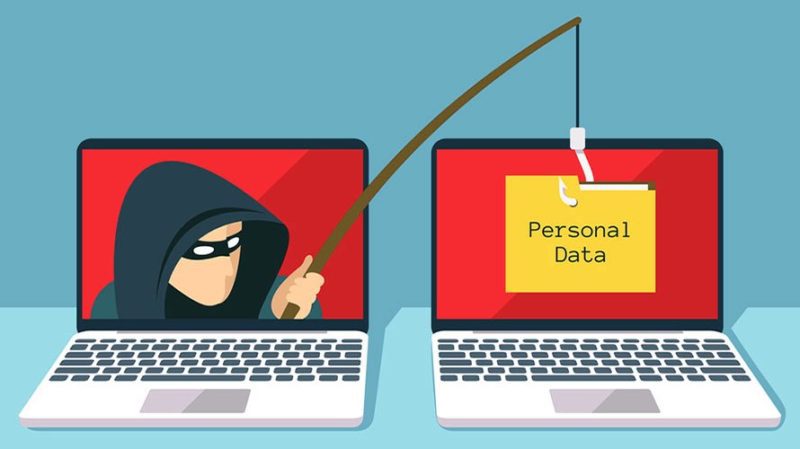Cybersecurity has permeated every sector of the economy, including education. The increased connectivity of devices and systems in the education sector has given rise to new cybersecurity risks. Within the past few years, several high-profile cyber-attacks have occurred. They’ve uncovered the vulnerabilities in the education industry. For example, the May 2017 WannaCry ransomware attack affected over 150 countries. The affected entities included some universities in the UK.
The Petya/NotPetya attack in June 2017 adversely affected several universities in Ukraine. In addition, the ransomware attack on the San Francisco Municipal Transportation Agency in November 2016 also disrupted operations at some colleges and universities.
The role of cybersecurity in education cannot be overstated. Institutions in the education sector store massive volumes of sensitive data. That includes students’ personal information, financial data, and research data. A breach of this data, including submitted essays, research papers, dissertations, etc., written through the help of a professional online essay writer from USA, writing services like DoMyEssay, or by the students themselves, can have far-reaching consequences.
Additionally, a successful cyber-attack can disrupt an institution’s operations, leading to revenue loss and reputation assassination. To combat these risks, educational institutions must have strong cybersecurity measures.
Before exploring the role of cybersecurity, here are the most common cyber-attacks in this sector.
Common Cyber Threats in Educational Institutions
Cyber-attacks targeting educational institutions can take many various forms. However, in the world of cybercrime, certain attacks occur more commonly.
- Phishing Attacks: In a phishing attack, an individual with malicious intentions tries to trick victims into disclosing confidential information. They are often carried out by email, with the hacker posing as a legitimate entity.
- Ransomware Attacks: Ransomware is a kind of malware used by hackers to encrypt victims’ files. Ransomware attacks can have devastating consequences since institutions could lose important data.
- DDoS Attacks: In this type of attack, the attacker floods a site with traffic in an attempt to obliterate it. This high traffic comes from multiple computers. DDoS attacks are sometimes very disruptive. In extreme cases, they cause massive financial loss.
- SQL Injection Attacks: SQL injection is code injected maliciously into a website’s database by an attacker. It gives the hacker access to sensitive information like login credentials and financial data.
Importance of Cybersecurity in Education
To Protect Sensitive Data
As mentioned earlier, educational institutions store a large amount of sensitive data. That includes students’ personal information, financial data, and research data. When this data is breached, there could be far-reaching consequences.
To Prevent Disruptions
A successful cyber-attack can disrupt an institution’s operations. That can single-handedly reverse the entire academic year’s progress.
To Follow Regulations
In some countries, educational institutions are subject to data protection laws and regulations. For example, there’s the EU’s General Data Protection Regulation (GDPR). These laws and regulations place strict requirements on protecting personal data. As a result, to ensure compliance, educational institutions have to implement robust cybersecurity measures.
To Protect Research
Research data is high value and is often the target of cyber-attacks. Besides, research data may be subject to export control laws, which regulate the transfer of certain types of data out of the country. So, educational institutions need strong cybersecurity measures to protect research data.
To Ensure Continuity
In case of a cyber-attack, institutions need to put systems and processes in place to ensure continuity of operations. That includes having backups of essential data and having a plan for how operations will continue running.
To Protect the Reputation
An educational establishment’s reputation is one of its most prized assets. A cyber-attack can damage an institution’s reputation and lead to losing students, staff, and donors. As a result, educational institutions must have strong cybersecurity measures in place to protect their reputations.
Measures Educational Institutions can Take to Improve their Cybersecurity.
- Implementing Robust Password Policies: Passwords are the first line of defense against hacks. As such, institutions need strong password policies in place. This includes requiring passwords to have a minimum length and using a mix of letters, numbers, and symbols. Of course, regularly changing them plays a major role too.
- Encrypting Data: Data encryption is the process of converting readable data into an unreadable format. This way, it will be difficult for attackers to access it even if they get it. Educational institutions should encrypt all sensitive data, including personal, financial, and research data.
- Training the Employees: The staff is often the weak link in an establishment’s cybersecurity defenses. As such, institutions should train employees on cybersecurity best practices. Some are, creating strong passwords, spotting phishing emails, and reporting suspicious activity.
- Investing in Security Tools: Various security tools help educational institutions improve cybersecurity. Tools like firewalls, anti-malware software, and intrusion detection systems are important. They help make it much more difficult for attackers to access systems and data.
- Developing an incident Response Plan: Institutions must have a response plan if a cyber-attack occurs. It should include steps for identifying and containing the attack, notifying appropriate personnel, and restoring systems and data. With a plan in place, educational institutions can mitigate the damage caused. It will also help to ensure that operations resume quickly.
The Bottom Line
Cybersecurity is a critical issue for educational institutions. Academic institutions can protect themselves by taking measures to improve their cybersecurity.



![[Top 5] Questions You Need to Ask Before Buying Managed Cloud Hosting Questions You Need to Ask Before Buying Managed Cloud Hosting](http://www.techinpost.com/wp-content/uploads/image001-3-696x385.png)





![[Buy Now] ENZ X36E Review Gaming Laptop (Buying Guide) ENZ X36E](http://www.techinpost.com/wp-content/uploads/2017/11/image001-11-324x235.png)
